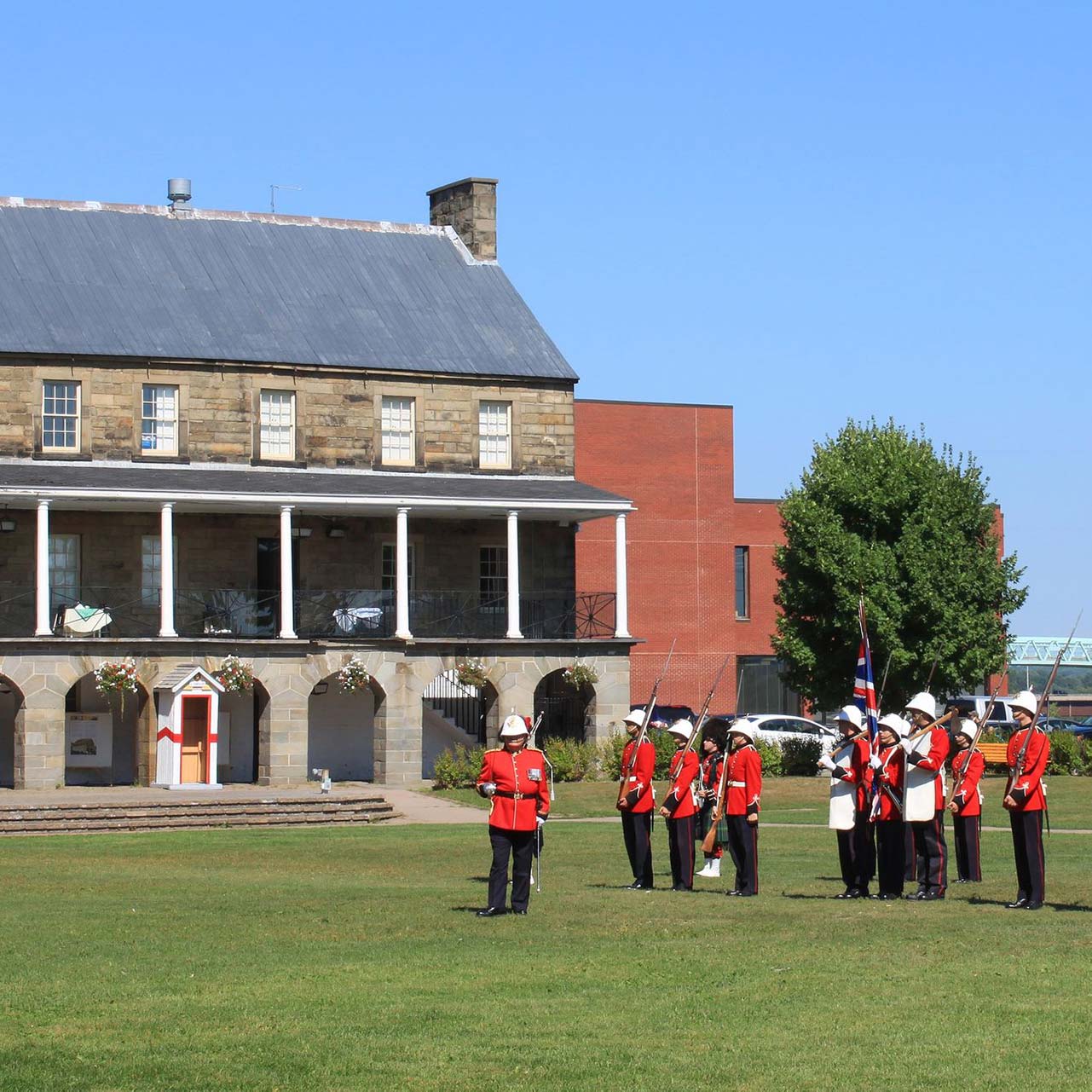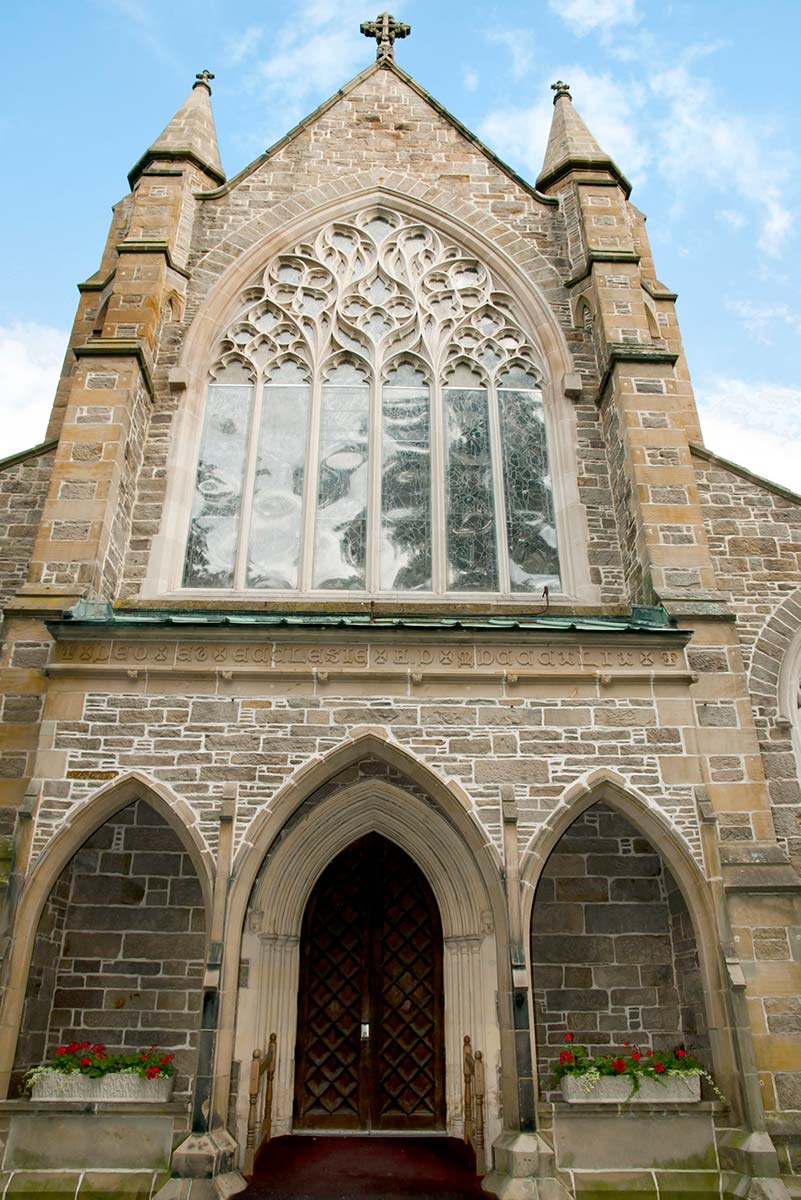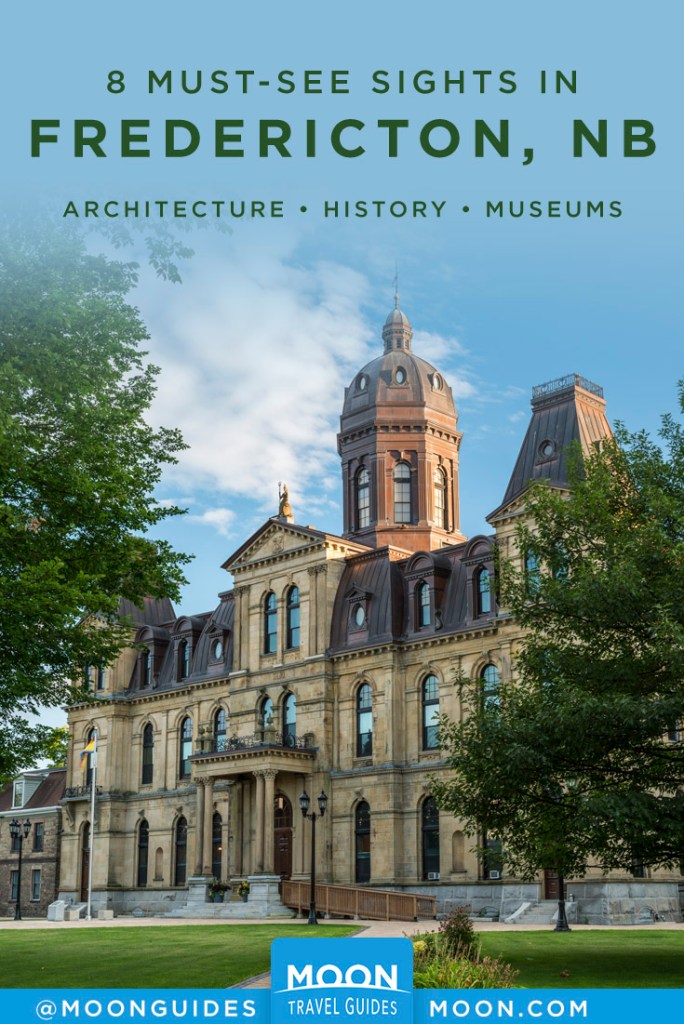What to See in Fredericton, New Brunswick
Fredericton is New Brunswick’s legislative, cultural, and educational center, and it’s one of the country’s oldest settlements. The city is the exception to the usual rule of thumb that a province’s busiest and largest city is the logical choice for the capital. Fredericton is hardly a metropolis. Rather, it’s of modest size, elegant, picture-book pretty, and very Anglo in tone and shape. “There is something subtle and elusive about it,” Michael Collie wrote of Fredericton, “like a person who has had long sessions of psychoanalysis and has become more sophisticated and charming in the course of them.”
Visitors flying to New Brunswick will find Fredericton makes a good introduction to the province and a good sightseeing base. Roads lead from here to every part of the province. St. Andrews and Saint John on the Fundy are each just over an hour’s drive south, and Moncton is 180 kilometers east. And it’s always nice to return to Fredericton, the province’s quintessential hometown.
Sights in Fredericton
Historic Garrison District
The Historic Garrison District (Queen St., 506/460-2129), a national historic site, dominates downtown, encompassing two long city blocks between the modern city to the south and the Saint John River to the north. A military compound built in 1784 as headquarters for the British army, it is enclosed by a curlicue wrought-iron black fence that contains a variety of attractions.
At the corner of Queen and Carleton Streets, the stone Officers’ Quarters was built in 1827. One street-level room (July-Aug. daily 10am-6pm; free) is open to the public, while around the back, low-ceilinged rooms once used to store ammunition now provide a home for vendors selling arts and crafts. Across the courtyard is the Guard House (July-Aug. daily 10am-6pm; free), a simple stone building that looks much like it would have in the mid-1800s, complete with costumed guards out front in summer.

Fredericton Region Museum
Facing the Parade Square at the east end of the Historic Garrison District, the Fredericton Region Museum (571 Queen St., 506/455-6041, May and Sept. Tues.-Sat. 1pm-4pm, June-Aug. daily 10am-5pm, adult $5, child $2) is housed within the former Officers’ Quarters (1825), a three-story stone building designed by the Royal Engineers and unusually styled with a ground-level colonnade of white pillars and an iron handrail.
The museum is devoted to provincial history from early Malecite and Mi’kmaq to contemporary events. The unlikely surprise is the Coleman Frog, a 17-kilogram, 1.6-meter-long amphibian stuffed for posterity and squatting inside a glass showcase on the second floor. The believe-it-or-not frog was found a century ago by local Fred Coleman, who developed a friendship with the frog and fattened it up by feeding it rum pudding and June bugs in honey sauce—or so the story goes.
School Days Museum
Step back into the classroom at the School Days Museum (corner of Queen and York Sts., 506/459-3738, mid-June-Aug. Mon.-Fri. 10am-4pm, Sat. 1pm-4pm, free), across York Street from City Hall. In addition to a reconstructed classroom, you’ll find an interesting display on one-room schools, textbooks and training manuals, and furniture from as early as the mid-1800s.
New Brunswick Sports Hall of Fame
The John Thurston Clark Memorial Building is an impressive 1881 Second Empire French Revival edifice that once served as customs house and post office. The building now provides a home for the New Brunswick Sports Hall of Fame (503 Queen St., 506/453-3747, June-early Sept. Tues.-Fri. noon-5pm, Sat. 10am-5pm, adult $3, child $2), with exhibits highlighting the province’s best sporting men and women.
City Hall
The red-brick City Hall, at the corner of Queen and York Streets and across from the Historic Garrison District, is central to everywhere downtown. The elegant 1876 building has housed city offices, a jail, a farmers market, and an opera house. Its high tower showcases the city’s copper clock, and the decorative fountain in front—crowned by the figurine that Frederictonians have dubbed “Freddie, the little nude dude”—was added in 1885.
Inside, the Council Chamber is adorned with a series of 27 locally produced tapestries depicting the city’s history. The Fredericton Visitor Information Centre (506/460-2129), in the building’s front vestibule, conducts chamber tours (mid-May-early Oct. daily 8:15am-7:30pm; early Oct.-mid-May Mon.-Fri. by appointment 8:15am-4:30pm).

Fredericton Lighthouse
Cross Regent Street from the Historic Garrison District to reach the privately operated Fredericton Lighthouse (615 Queen St., 506/460-2939; mid-June-mid-Sept. daily 10am-10pm; adult $2). The interior consists of 13 separate landings exhibiting shipping and river-sailing artifacts. The top level commands a magnificent riverfront view. At ground level, you’ll find a gift shop and outdoor café serving light lunches and delicious ice cream.
Beaverbrook Art Gallery
On the east side of downtown is Beaverbrook Art Gallery (703 Queen St., 506/458-2028; Mon.-Sat. 10am-5pm, Sun. noon-5pm; adult $10, senior $8, child $5), which was donated to the city by New Brunswick art maven Lord Beaverbrook, also known as William Maxwell Aitken. The gallery boasts an impressive 2,000-piece collection—the most extensive British fine arts collection in Atlantic Canada, if not the nation.
Among the British painters represented are Thomas Gainsborough, Sir Joshua Reynolds, John Constable, and Walter Richard Sickert. You’ll find Graham Sutherland’s sketches of Winston Churchill—drawn in preparation for Churchill’s official portrait—and works by Atlantic Canada’s Miller Brittain, Alex Colville, and Jack Humphrey. Also central to the collection are the oils of Cornelius Krieghoff, depicting social and domestic scenes of early life in Acadia. Lord Beaverbrook could not resist the European masters—Salvador Dalí’s large-scale Santiago El Grande and Botticelli’s Resurrection are prominently displayed.
Legislative Assembly Building
The splendidly regal Legislative Assembly Building (706 Queen St., 506/453-2527, mid-June-Aug. daily 9am-5pm, Sept-mid-June Mon.-Fri. 8:30am-4pm, free) lies kitty-corner from the Beaverbrook Art Gallery. The sandstone French Revival building spreads across a manicured lawn, its massive wings pierced with high arched windows, and the upper floor and tower rotunda are washed in glistening white. The building was completed in 1882 at a cost of $120,000, including construction and furnishings. The front portico entrance opens into an interior decorated in high Victorian style—the apex of expensive taste at the time. Glinting Waterford prisms are set in brass chandeliers, and the spacious rooms are wallpapered in an Oriental design. The interior’s pièce de résistance is the Assembly Chamber, centered around an ornate throne set on a dais and sheltered with a canopy.
John James Audubon’s Birds of America is kept in the Legislative Library. One of four volumes is on display in a climate-controlled exhibit, and pages are periodically turned to show the meticulous paintings.

Christ Church Cathedral
Gothic-styled cathedrals were designed to soar grandiosely toward heaven, and this storied stone cathedral is no exception. With a lofty copper-clad central spire and elegant linear stone tracery, Christ Church Cathedral (506/450-8500) rises from a grassy city block at Church and Brunswick Streets. Begun in 1845 and consecrated in 1853, this was the first entirely new cathedral founded on British soil since the Norman Conquest way back in 1066. It was rebuilt after a fire in 1911 and is still the place where the city’s nabobs go to pay their respects to the benevolent powers that be. It’s open year-round, with recitals taking place in summer Friday 12:10-12:50pm.
Historic Cemeteries
The Old Burial Ground is bounded by Regent, Brunswick, George, and Sunbury Streets. The site—spliced with walkways beneath tall trees—is one of two historic burial grounds in town. This spread of greenery was the final resting place for Loyalist notables.
The Loyalist Cemetery (formerly the Salamanca graveyard), on an unmarked gravel road off Waterloo Row at the riverfront, is simpler and marks the final resting place of the founding Loyalists who died in the town’s first winter of 1783-1784.
Odell Park
Of the 355 hectares of lush parkland throughout the city, Odell Park (Rockwood Ave., 506/460-2038) is the choice spread, holding 16 kilometers of trails, formal lawns, duck ponds, a deer pen, barbecue pits, and picnic tables. The park is Fredericton’s largest, covering 175 hectares. It is best known for an arboretum holding every tree species in the province; a 2.8-kilometer walking trail divided into three loops wanders through the shady expanse. To get there from downtown, head south on Rockwood Avenue.
Related Travel Guide
Pin For Later
